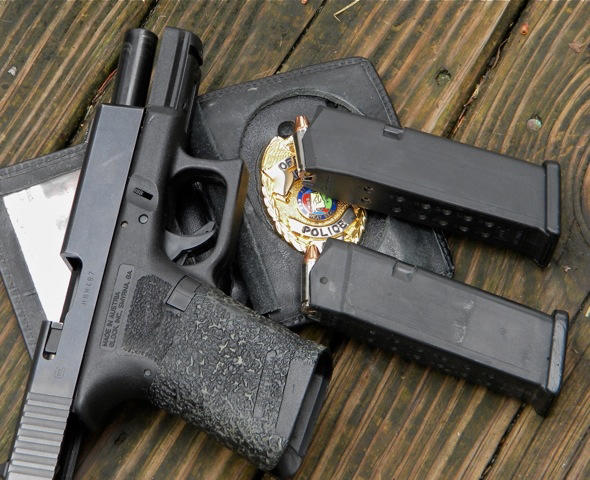
“What’s the difference between what you’re teaching us and what you teach law enforcement?” This question is often asked during concealed carry and self defense classes. “It’s almost exactly the same,” I explain, “it’s the application that’s usually different.”
To efficiently and safely work with a firearm you have to know the basics, starting with safety. The four safety rules apply to everyone; there are no exceptions. The fundamentals of marksmanship – aim, hold, press and follow-through - are used for shooting accurately. Ditto for manipulations, which include loading, unloading, reloading and clearing malfunctions when they occur.
The threat response should include moving, communicating, using cover, shooting if necessary and thinking. Moving forces the threat to react to you, puts more ground between you and the threat – which is almost always a good idea – and gets you behind cover. You communicate with the threat, issuing verbal commands, and with other members of your team, who may or may not be armed. Cover provides protection. If necessary you shoot to stop the threat. Thinking, evaluating and making decisions is necessary to win, regardless of conditions.
Everyone uses the same fundamentals and techniques to use their firearm safely and efficiently. The difference is in tactics, the application of these skills. In a self-defense situation you do not pursue a threat, unless it was to prevent them from attacking someone else. When involved in a conflict you need to break off contact as soon as possible. It’s not a good idea for to go searching for a threat, again unless necessary to save someone else, for example a family member. If you hear gunfire the first tactic is avoidance and escape. Normally a concealed carry holder does not need or want to hold a threat or attempt to take them into custody.
A law enforcement officer’s job is to actively pursue threats. They are trained to do this, and will often have backup when searching for threats. When necessary law enforcement officers to go towards the shooting in order to stop the threat. Officers receive training in the proper way to detain suspects and take them into custody. Their application of the fundamental skills is different from that of a concealed carry holder.
One of the things that most people don’t understand is that unless you’re in the military you’re a civilian. There are a lot of civilians who have carry permits. Law enforcement officers are civilians, but are what I call “armed professionals.” It’s their job to deal with dangerous situations. Concealed carry holders avoid danger if at all possible, but if necessary are trained to protect themselves, family or friends. Concealed carry holders and law enforcement officers use a lot of the same skills. The difference is how, when and why they use them.
Tiger McKee is director of Shootrite Firearms Academy, located in northern Alabama. He is the author of “The Book of Two Guns” - http://shootrite.org/book/book.html writes for several firearms/tactical publications, and is featured on GunTalk’s DVD, “Fighting With The 1911 - http://shootrite.org/dvd/dvd.html McKee’s new book, AR-15 Skills and Drills, is available off Shootrite’s website: http://shootrite.org/AR15SkillsBook/AR15SkillsBook.html
http://www.facebook.com/pages/Shootrite-Firearms-Academy/156608611038230?ref=ts